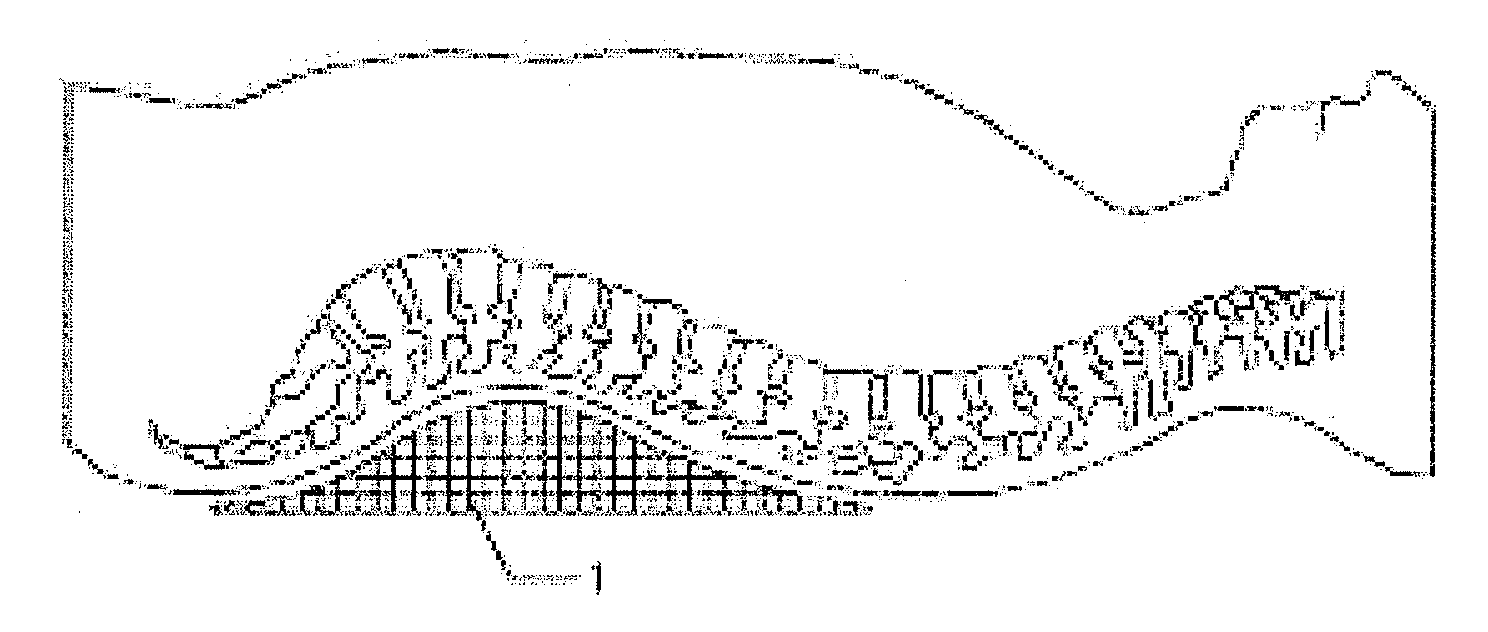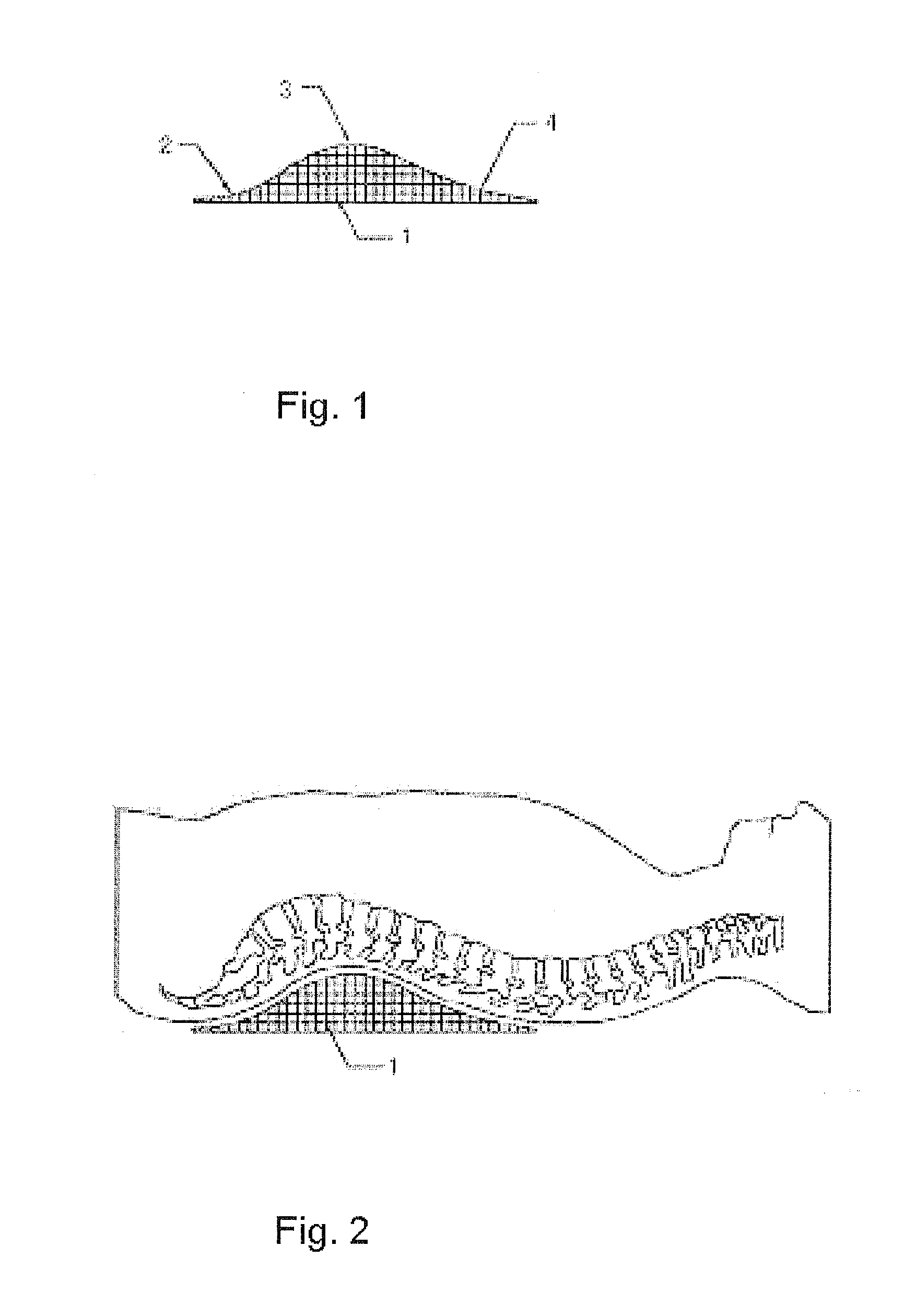Herniation of lumbar intervertebral discs and
dislocation or translocation of lumbar vertebrae are common illnesses which occur frequently, as are the resulting damage to the
soft tissue of the lumbar region, and pain in the lower back and legs.
The cause of these illnesses is long-term use of the lumbar vertebrae in a
poor posture under an excessive load greater than the limit of pressure sustainable by the lumbar
vertebra, with the result that the lumbar intervertebral discs degenerate and lose their original elasticity, such that the concave physiological curvature of the vertebrae slowly straightens, or even protrudes in the opposite direction, until a
deformity such as translocation or herniation arises.
This also causes damage to the muscles, ligaments and
soft tissue of the lumbar region, eventually causing vertebral pulp to protrude and compress arteries, blood vessels and nerves; this leads to dysfunction of the
spinal column, giving rise to radiating pain in the lumbar region and the legs.
1. Treatment with drugs has a certain
curative effect in terms of eliminating
inflammation and restoring soft tissue function. However, the
curative effect is negligible where reposition of lumbar vertebrae is concerned.
2. Traction therapy can alleviate
deformity of lumbar vertebrae, but because a sufferer cannot possibly undergo traction therapy continuously on a long-term basis, the vast majority of people suffering from
lumbar intervertebral disc herniation find themselves in a situation in which they undergo
emergency treatment after onset of the illness, subsequently experience a slight improvement, at which point treatment is stopped immediately, and after a short period of time suffer further damage that requires further treatment. The vast majority of sufferers find themselves in a vicious cycle of this sort.
3.
Massage therapy has a certain
curative effect in treating
dislocation and translocation of lumbar vertebrae. However, the vast majority of sufferers are unable to undergo
massage therapy on a daily basis, and so unable to be cured permanently, with the result that their illness develops repeatedly on an ongoing basis.
4.
Surgical treatment can repair damaged lumbar intervertebral discs temporarily, but is unable to completely cure the fundamental cause of
lumbar intervertebral disc herniation, in other words completely restore the curvature of the deformed lumbar vertebrae.
It could be said that none of the above methods is capable of completely curing disorders of the lumbar vertebrae such as lumbar
intervertebral disc herniation and translocation of lumbar vertebrae.
However, there are extremely few cases of a lumbar support being successfully used to cure lumbar
intervertebral disc herniation or damage to lumbar vertebrae completely.
In fact, the main problem here is that lumbar supports are designed and used irrationally, and the maximum effect attainable thereby has not been fully exploited.
All lumbar supports are convex supports with a single curved surface, and thus are unable to completely match the natural curvature of the lumbar vertebrae of the
human body, in particular the arch of the reverse-curved surface of the sacral vertebrae part.
The result is that they are unable to provide effective support of the lumbar vertebrae in all directions, and so the results in terms of correction and treatment of the lumbar vertebrae are impaired significantly.
As a result, a shearing force arises with the unsupported part of the lumbar vertebrae in the support cross-section, such that tension arises in the lumbar vertebrae and ligaments in this region, in particular the junction between the lumbar vertebrae and the sacral vertebrae.
With the sacral vertebrae left unsupported, support of the lumbar vertebrae will give rise to reverse tension and so be insufficient.
3. Since each sufferer will have a different height, weight, physique and degree of damage to the lumbar vertebrae, no single lumbar support is capable of suiting all sufferers.
Using a lumbar support that does not correspond to the natural curvature of a sufferer's lumbar vertebrae or the height or length thereof will not give a beneficial result in terms of reposition of the lumbar vertebrae.
In this way, a vicious cycle of constant treatment and constant recurrence emerges, with no way of achieving the outcome of complete cure of the disorder of the lumbar vertebrae.
On account of the above failings, existing lumbar supports can only alleviate illnesses of lumbar vertebrae temporarily, being unable to achieve the objective of effecting a radical cure thereof.
 Login to View More
Login to View More  Login to View More
Login to View More 

